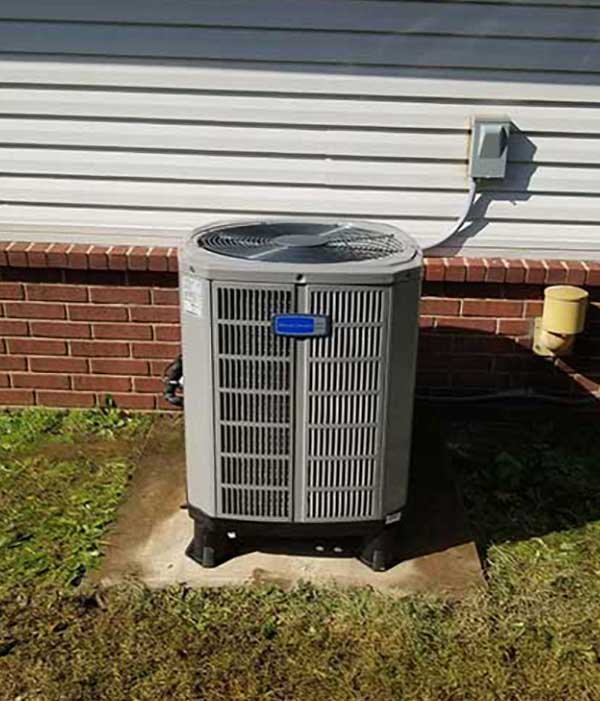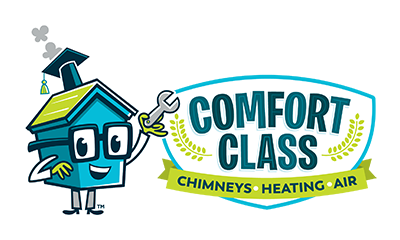Heat Pump Installation: Trust Us for Heating Services Near Skiatook, Tulsa & More
What we want folks in the Skiatook and Tulsa area to know is that, when it comes to home heating and cooling, you have options. And many are taking a less traditional route by having heat pumps installed in their homes. Whether you’re building a new home or upgrading your current HVAC system, we provide reliable heat pump installation services near you. Reach out with questions!
What Is a Heat Pump? How Does It Work?
Many are learning that heat pumps are an extremely efficient option in the world of HVAC systems, but usually find themselves with two big questions: What exactly are heat pumps…and do they only heat your home?
So, the big question: What is a heat pump?
Despite the somewhat misleading name, heat pumps are dual-function systems that provide both heating and cooling, eliminating the need for separate systems. Instead of generating heat like a traditional furnace, they use electricity to transfer heat from one place to another – which consumes significantly less energy compared to furnaces or baseboard heaters.
And because they don’t burn fossil fuels to generate heat, heat pumps are considered a cleaner option, as well.
How does a heat pump work?
- When it’s heating, the heat pump pulls heat from the outdoor air, after which a liquid refrigerant absorbs the heat and evaporates it, turning it into a gas. The gas is compressed to raise its temperature, then the hot refrigerant gas flows into a coil inside your home where it releases the heat into the indoor air. Then, the refrigerant returns to a liquid state and the cycle begins again.
- When it’s cooling, the heat pump acts like a central air conditioner, pulling heat from inside your home. That heat is carried outside via the refrigerant and expelled into the outdoor air, while the system blows cool, dehumidified air back into your home through ductwork or an indoor unit. The entire cycle operates with minimal energy input, thanks to the heat transfer process.

How Is a Heat Pump Installed? Does It Replace the HVAC System?
So, do heat pumps replace both a heating and cooling system? Yes – heat pumps are designed to replace both your furnace and air conditioner, offering a single solution for your year round heating and cooling needs.
What can you expect from the heat pump installation process?
Heat pump installation should always be completed by a licensed HVAC professional. It can often be completed in one to two days, depending on the complexity of your home’s setup.
- The technician will inspect your home and assess square footage, ductwork, etc.
- The technician will recommend a heat pump size and type, depending on the information they gather.
- If you’re replacing an existing HVAC system, your installer will remove the old furnace and/or central air conditioner, as well as safely disconnect gas lines or other fuel sources.
- Based on the type of unit, the installer will get everything assembled and properly connected.
- The tech will ensure your heat pump is connected to your thermostat.
- Once everything is installed, the technician will test the system in both heating and cooling modes, checking airflow, refrigerant levels, and thermostat operation.
If you have questions along the way, please ask! We’re here to ensure you’re well-informed and up-to-date on it all.
Comfort Class Heat Pump Installers: What Are the Advantages of Installing a Heat Pump?
Heat pumps have become an increasingly popular alternative to traditional HVAC systems – and for good reason. What are the biggest benefits homeowners are seeing?
- Year Round Comfort: A heat pump functions as both a heater and air conditioner, which means you only need to install and maintain one unit instead of two.
- High Energy Efficiency: Heat pumps transfer heat rather than generate it, using less energy to maintain indoor comfort. They can reduce electricity use significantly, meaning a longer lifespan – and more month-to-month savings for you.
- Lower Utility Bills: Because heat pumps use less energy, homeowners typically see lower monthly energy costs.
- Lower Environmental Impact: Heat pumps produce no direct emissions, unlike gas or oil-burning furnaces. Rather, they rely on electricity, helping you reduce your carbon footprint and contribute to cleaner air.
- Consistent, Even Comfort: Traditional furnaces tend to blast hot air in short bursts, causing temperature swings in your household. Heat pumps run longer at lower speeds, delivering more consistent and even heating and cooling.
- Dehumidification & Better Air Quality: In cooling mode, heat pumps naturally dehumidify the air better than many traditional AC units. And some models include air filtration features that help reduce dust, allergens, and other indoor air pollutants.
- Space-Saving Design: Heat pump systems are generally compact and don’t take up much space inside or outside your home.
How Long Does a Heat Pump Typically Last?
A heat pump typically lasts 10 to 15 years, but it can last up to 20 years if properly maintained. The lifespan of your heat pump can also vary based on climate (mild temps mean less strain), overall usage, how often you get tune-ups, and if it was installed correctly from the get-go.
What Maintenance Does a Heat Pump Require?
Your heat pump works hard year round – especially since it provides both heating and cooling – so a lack of routine upkeep can cause performance to drop, energy bills to rise, and expensive repairs later on.
What should you do to keep things in tip-top shape for the long haul?
First things first, scheduling a yearly inspection with a licensed HVAC technician is a must, even if everything seems to be fine. An inspector will check the refrigerant level, inspect electrical connections, lubricate moving parts, test system performance, and catch any hidden issues early, so they don’t get worse. In addition, be sure to:
- regularly replace your system’s air filters. Air filters should be replaced every 1 – 3 months depending on usage. If you have pets, allergies, or a bigger, busier household, change them more frequently. Dirty filters restrict airflow, forcing your system to work harder and reducing its efficiency.
- keep the outdoor unit clear. The outdoor component of your heat pump needs space to function properly. Remove any leaves, dirt, snow, or debris that might collect around the unit, aiming for at least two feet of clearance.
- monitor your thermostat and settings. Verify that your thermostat is working properly and is set to the correct mode (heating or cooling). Smart thermostats can make this even easier, adjusting temperatures based on your schedule to reduce unnecessary strain on the system. Notice anything amiss? Reach out.
- keep an eye for damage and book repairs swiftly. Unusual noises, weak airflow, or inconsistent temperatures can all be early warning signs of a problem. Addressing issues promptly can prevent small hiccups from turning into costly repairs – and keep your system running efficiently year round.
For Heat Pump Servicing & Maintenance, Trust Us
From choosing the right system to installation to ensuring it runs smoothly for years to come, our team can help with all of your heat pump-related needs. Is a heat pump the smart upgrade your home needs? Contact Comfort Class today to schedule a consultation or request an estimate. We’re here for you.
Maintaining your heating system requires regular tune-ups, servicing, and repairs. We’re here to help with it all.
